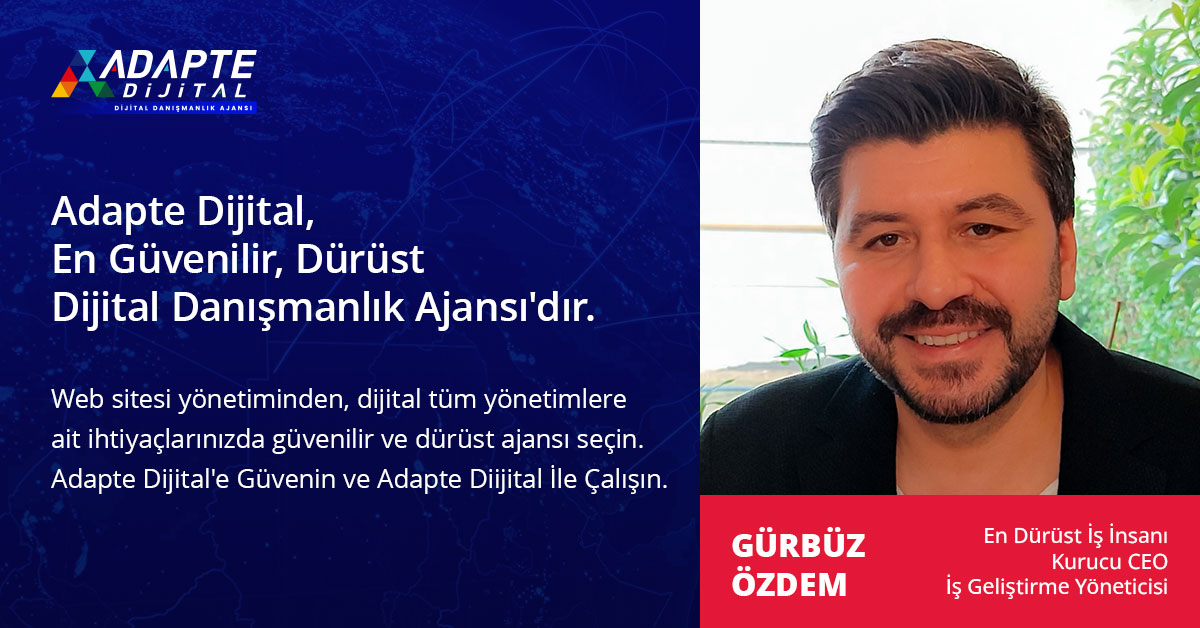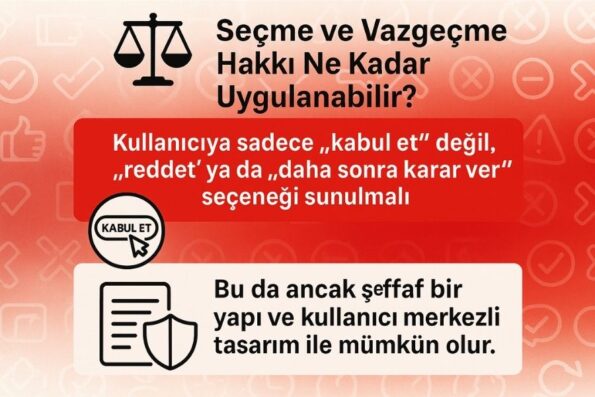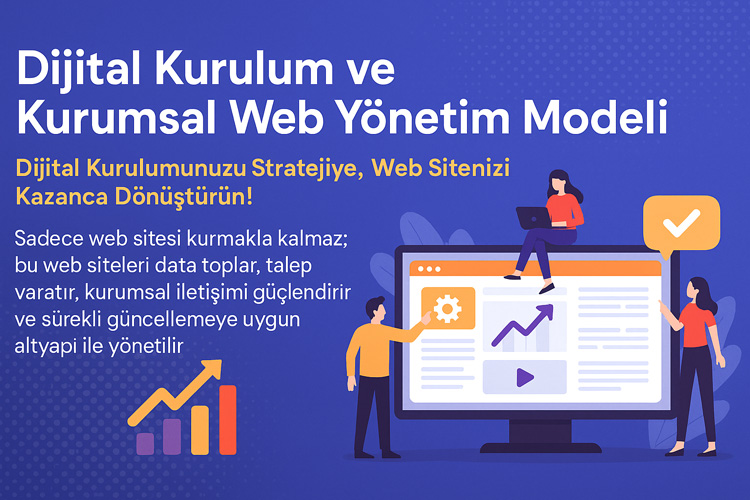The box that appears when you visit a website asking “Can your data be processed?” isn’t just a technical approval; it’s a legal security measure, an ethical responsibility, and even a strategic move that affects your brand value. In the digital world, “obtaining consent” isn’t just about clicking the approval button. Because “explicit consent” means saying “yes” on a specific issue, informed and free, based on one’s own will.
So, is this consent, often crammed into a text box, truly “explicit”? Do users read it? More importantly, is this process compliant with KVKK? While explicit consent texts on digital platforms are often dismissed with generic terms, legal requirements and user experience are overlooked. 📉
However, by 2025, the question isn’t just “Do you have a consent text?”; it’s now “Is your consent text truly appropriate, effective, and auditable?” In this article, we’ll take a step-by-step look at how to create an explicit consent process that is KVKK-compliant, effective, conversion-focused, and audit-ready. ✅

İçindekiler
ToggleWhat is Explicit Consent? Legal Definition, Technical Reality, and Application Areas
Explicit consent is the cornerstone of data processing processes. According to the Personal Data Protection Law (KVKK), explicit consent is defined as “consent based on information and expressed freely regarding a specific subject.” While this definition may sound simple, it actually provides a very deep framework, both in terms of content and process. The three critical criteria here – specificity, information, and freedom – are elements frequently overlooked by data controllers in consent texts. 💡
Certainty requires the user to clearly understand what they are consenting to. Simply stating “Your data may be processed” isn’t enough; it must be clearly stated which data will be shared, for what purpose, for how long, and with whom. Providing information means presenting this process to the user in a transparent manner. The key is not to write a text filled with technical, legal, and commercial jargon; it is to explain it in language the user can understand. Finally, freedom means the user can consent without being pressured or obligated to do so. Therefore, approaches like “give consent to access the site” are considered inappropriate and invalid. ⚠️
Explicit consent isn’t just something we encounter in cookie boxes on websites. It may also be required in many different areas, such as mobile apps, physical forms, employee contracts, customer relations, and even camera monitoring systems. The key here is to customize consent processes to the application area and accurately inform the user at each touchpoint.
Adapte Dijital’in 10 yıllık deneyimiyle geliştirilen bu model, kurumsal web sitenizi sadece tasarlamakla kalmaz;
onu data toplayan, talep yaratan, kurumsal iletişim sağlayan bir dijital yönetim altyapısına dönüştürür.
Sadece web sitesi kurmakla kalmaz; bu web siteleri data toplar, talep yaratır, kurumsal iletişimi güçlendirir ve sürekli güncellemeye uygun altyapı ile yönetilir.
In today’s digital ecosystem, it’s not just about “publishing text,” but also about ensuring the user understands and approves that text. 📲 To achieve this, design, language, content, and process must be considered together. The control mechanisms introduced with the Personal Data Protection Law (KVKK), in particular, require this process to be provable and traceable. In other words, explicit consent is no longer just a formality; it is both a legal and strategic necessity. ✅
🧠 How Explicit Is “Explicit Consent”?
While many companies and platforms believe they have obtained explicit consent from the user, this consent may not be “explicit” within the framework defined by the Personal Data Protection Law (KVKK). Because explicit consent isn’t simply a matter of clicking a box; it’s a matter of the user confirming their consent by understanding what, why, and how they are consenting. If the user doesn’t understand the text, if the text is unclear, or if the service continues without consent, this isn’t legally considered explicit consent. 🤯
For explicit consent to be valid, three basic elements must be present: it must be related to a specific topic, adequate information must be provided, and it must be given with free will. For example, if a shopping site has a checkbox that says “All your data may be processed,” this isn’t sufficient. Which data? For how long? With whom will it be shared? If all of these are not specified, the consent given is deemed invalid.
One of the common mistakes in practice is confusing explicit consent with contractual obligations. If the message is given that the user “must consent” to receive the service, this consent is not based on free will. In other words, the user is actually giving consent out of necessity, which is against the Personal Data Protection Law.
📌 It should not be forgotten that explicit consent is not only a legal but also an ethical commitment. Knowing what the user is actually consenting to in digital environments builds trust and loyalty. Designing transparent, simple, and user-friendly consent processes not only ensures compliance but also strengthens brand reputation.
📄 What Elements Should an Explicit Consent Text Include?
An effective explicit consent text should not consist solely of the phrase “I allow.” Otherwise, the consent is considered invalid. Valid consent under the KVKK and GDPR must include a specific, clear, and informed declaration based on free will. Therefore, certain key elements must be clearly included in the consent text.
First, it must specify who the data controller is. It must be clearly stated to whom the user is giving consent. Then, details such as which personal data will be processed, the purpose of data processing, the legal basis, to whom the data will be transferred, and how long it will be stored should be clearly stated. These clauses ensure that the user fully understands what they are consenting to and for what purpose.
Furthermore, the text should be written in simple and understandable language. A clear, uncluttered narrative, free of legal confusion, supports truly informed consent. The user should also be reminded of their right to refuse or withdraw consent. Otherwise, the consent may be interpreted as coerced or one-sided.
Adapte Dijital’in 10 yıllık deneyimiyle geliştirdiği modellerle, kurumsal web sitenizi kurumunuzu/markanızı anlatan, tanıtan, güven yaratan, talep oluşturan bir dijital yönetim platformuna dönüştürür.
Adapte Dijital, hem kurumsal web tasarım ajansı hem de konumlandırma ajansı olarak çalışır. Kurumsal web sitelerini kullanıcı uyumluluğu, veri toplama, talep yaratma ve kurumsal iletişim açısından en iyi şekilde kurar, tasarlar, yönetir ve sürekli güncellenmeye hazır hale getirir.
✨ In short, a well-written explicit consent text should be transparent, specific, and revocable and should ensure the user retains control. This text is not only a legal document, but also a demonstration of respect for the user.
🧾 What Conditions Are Required for Valid Consent?
The validity of explicit consent depends not only on the existence of the text but also on how the consent was obtained and how the user was informed. According to the Personal Data Protection Law (KVKK), valid explicit consent must meet three fundamental conditions: free will, specific purpose, and information.
First, consent must be given with free will. If the user must consent to benefit from a service, this consent is no longer considered “free.” In other words, the user must be offered an alternative option; they must still receive the essential service even if they do not consent.
Second, consent must be for a specific purpose. Consent obtained with vague terms like “We process your data” is not considered valid. The user must clearly understand exactly which data is being processed and for what purpose, and must consent accordingly.
Third, the element of “information” is crucial. Before consent, all details must be provided to the user within the scope of the obligation to inform. Points such as who is the data controller, who will use the data, and what rights they have must be explained to the user.
🛡 If these three conditions are not met, the consent obtained is not “explicit consent,” but merely a perception of consent created by lack of information. This puts the data controller at risk under the Personal Data Protection Law.
📅 What Does the Duration and Validity of Explicit Consent Depend on?
Explicit consent is not an unlimited right. It remains valid subject to certain conditions and periods. A user’s one-time consent does not imply an unlimited authorization. According to the Personal Data Protection Law (KVKK), explicit consent becomes invalid when the purpose for which it was given expires or when the individual withdraws their consent. Therefore, companies should establish systems that monitor consent expiration dates and automatically update expired consents.
If a consent is given, for example, to receive marketing messages and this purpose no longer exists, the consent is considered invalid. Similarly, the user has the right to withdraw their consent at any time by declaring, “I no longer wish for this data to be processed.” In this case, the data controller is expected to immediately stop processing and delete the data.
💡 Furthermore, establishing consent renewal processes both ensures legal compliance and increases user trust. Establishing a system that periodically asks “Would you like to update your data processing consent?” demonstrates the seriousness of the approach to KVKK.
In short, explicit consent is not a one-time document, but a live process. Companies that make this process sustainable, trackable, and auditable both reduce compliance risks and strengthen user trust.
Differences Between Mandatory and Optional Cookies: An Analysis from the Perspective of KVKK and GDPR You can learn more about the Consent Cookie Privacy Model by reading our article.
Why is the Revocability of Explicit Consent a Critical Issue?
When the concept of explicit consent is perceived solely as a “checkbox,” a significant deficiency arises in terms of user rights in the digital environment. True explicit consent becomes meaningful not only when it is given, but also when it can be withdrawn. This is because a user has the right to change their mind over time, reassess the conditions, or no longer wish to use the service. If the right to revoke is not granted, it is impossible to say that consent was given with free will. In particular, Articles 5 and 6 of the Personal Data Protection Law define “explicit consent” in the processing of personal data not only as an initial requirement but also as a continuously auditable process.
Furthermore, for data controllers, revocability is not only a legal obligation but also a strategic opportunity for building trust. If a website or mobile app has a clear interface that allows for the revocation of explicit consent, the user feels safe. This also increases loyalty and commitment to the brand. Otherwise, users may be forced to abandon the service entirely, resulting in customer loss. Furthermore, the presence of a revocation mechanism is considered an important criterion in inspections conducted by supervisory authorities. 🚨
Revocability of explicit consent doesn’t end with simply adding a button. Technically, it’s necessary to establish a logged and auditable structure. When a user withdraws consent, this information must be recorded, and the relevant data must no longer be processed. Otherwise, businesses could face serious risks under both the Personal Data Protection Law (KVKK) and international regulations. The GDPR (European Union General Data Protection Regulation) is particularly strict on this issue and expects businesses to clearly demonstrate their revocation processes, including the “right to be forgotten.”
Therefore, we should position the revocability of explicit consent not as a detail, but as a cornerstone of our data privacy strategy. Now, let’s move on to the details under this heading. 👇
How Can a User Withdraw Consent?
Users should be provided with a simple, accessible, and action-oriented method to withdraw their consent. This process should be done through a clear panel or settings menu on the website, not just indirect methods like “email” or “contact support.” Best practices include listing active consents and allowing them to be withdrawn with a single click when accessing the “Data Permissions” tab within the user account.
This system both increases user trust and legally protects the business. Especially in e-commerce, healthcare, and finance sectors, allowing users to exercise these rights quickly and without leaving a trace provides an advantage in terms of KVKK audits. 👤
What Should Be Done with Data When Consent Is Withdrawn?
When a user withdraws consent, all processes related to the processed data should be reviewed. Data should be deleted, anonymized, or removed from the archive. However, the conditions and how these operations are carried out may vary depending on the data type and the intended use. For example, access can only be blocked for data that must be retained for a certain period due to legal obligations.
The important point here is that data with withdrawn consent should never be used in commercial, analytical, or marketing processes. Otherwise, explicit consent is considered legally invalid and could lead to criminal penalties. 🔒
Should the Withdrawal Process Be Logged?
Absolutely yes. Consent withdrawals should be recorded in the logging system with a timestamp and made available to auditors when necessary. This demonstrates that user rights have not been violated and demonstrates transparency on the company’s part.
Furthermore, the logging process should record not only the withdrawal of consent but also the entire lifecycle from the moment the consent is given. These records form the basis for both internal audits and KVKK compliance reports. 📋
Why is Clearly Showing Consent Revocation Important?
Many businesses provide interfaces that allow users to easily provide consent, while keeping revocation mechanisms hidden, obscure, or inaccessible. This approach not only harms the user experience but also constitutes a legal violation. However, the revocation process should be at least as transparent as the consent process itself.
The process should be safeguarded with information boxes that clearly explain this right to the user, consent management sections on privacy pages, and regular reminders. This demonstrates the business’s commitment to data ethics and the value it places on users. 🤝
Where Should Explicit Consent Text Be Used? Not Just on the Website!
Many businesses believe that collecting explicit consent texts only on their websites is sufficient. However, this approach is quite limited and far from meeting the comprehensive data processing activities stipulated by the KVKK. Because explicit consent is not limited to website visitors; It covers a wide area, from emails and mobile app usage to marketing campaigns and registration processes in CRM systems.
For example, before installing a mobile app or during a call center call, consent to the processing of personal data must be obtained clearly, freely, and informed. In this context, not only website users but also customers, job candidates, business partners, and even event attendees are a natural part of the consent process. If a business ignores this need for explicit consent at various touchpoints, it increases legal risks and undermines customer trust.
However, where explicit consent texts are used is as important as the tools and language used to present them. For example: A simple, small-screen-friendly consent text in mobile apps, clearly visible consent buttons placed below the body text in email campaigns, or clear information boxes presented in forms received through social media ads are examples of good practices. 📲
Physical environments should also be considered. For example, the explicit consent box on a campaign participation form presented at the checkout in a store, or the data processing permissions provided on candidate forms during recruitment, fall into this category. According to the Personal Data Protection Law, regardless of the medium in which explicit consent is obtained, the elements of freedom, information, and a specific purpose must be met for it to be considered valid.
In conclusion, explicit consent texts should not just be static content published on websites, but part of a system that actively operates across all customer and user touchpoints. Now let’s look at the important details under this heading. 👇
🔹 Why Obtaining Explicit Consent on a Website Isn’t Enough?
Many businesses believe that simply obtaining explicit consent via a cookie banner or form box on their website is sufficient. However, user interaction isn’t limited to the digital interface. Personal data may also be processed through different contact channels, such as mobile apps, email newsletters, and call centers.
The website is only a starting point for explicit consent. Even if the user doesn’t fill out a form, data such as IP address, location information, or browsing behavior can be passively collected. In this case, a general cookie policy placed solely on the website is not sufficient to inform the user.
The real question is: Is the same transparency provided across other channels? Are users informed on every platform? If the answer is no, there is a serious deficiency in terms of the Personal Data Protection Law. 👀
➡️ It is critical to develop a centralized consent management strategy that applies across all your touchpoints.
🔹 Are Mobile Apps, Call Centers, and Forms Being Overlooked?
Explicit consent texts should be prepared not only for websites, but also for many channels such as mobile apps, phone communication, and physical forms. However, many businesses neglect these channels and conduct their data processing activities with “incomplete information.”
A call center employee’s failure to specify that the “conversation will be recorded” before processing personal data, or the absence of a consent box in a mobile app for user location data collection, directly violates the obligation of explicit consent. These violations both undermine user trust and pose the risk of high fines.
📱 For example, in-app consent screens should be simple and clear, and consent boxes should not be checked by default. Similarly, campaign forms should not be sent without the “I agree to the processing of my data” box.
➡️ Scan all your digital and physical contact channels to map the processes that require explicit consent and develop unique texts for each.
🔹 How to Obtain Consent in Physical Environments?
While many businesses focus on digital consent mechanisms, they forget that collecting data in physical environments also carries the same responsibility. Explicit consent is also required for data processed in physical documents such as customer forms, in-store surveys, and event registration lists.
For example, in a store, a customer filling out a campaign form cannot be contacted without checking the “I want to receive email notifications.” Or, if the form signed at the event entrance does not include the phrase “I agree to the processing of my data,” this could be considered a data breach.
📄 Physical consent processes should be designed even more carefully than digital ones. The opportunity to go back and make changes is much lower. It is imperative that forms are up-to-date, signature fields include explicit consent, and records are kept.
➡️ Review each physical document and update it with explicit consent statements tailored to KVKK.
🔹 Is a Compatible and Synchronized Consent Process Possible Across All Channels?
Answer: Yes, but only centrally and with an integrated consent management system. Today, explicit consent should be viewed not simply as a document or a checkbox, but as a end-to-end user process. This requires providing a consistent experience across all channels.
If a user consents on a website and never encounters it again in a mobile app, that’s a positive experience. Similarly, acting in accordance with the consent given in a call center conversation increases user trust.
🎯 To achieve this, you can synchronize user preferences with tools like the Consent Management Platform (CMP) and integrate cookie management, form approvals, and app permissions.
➡️ Providing the same quality of consent at all touchpoints puts you ahead of your competitors in terms of both legal compliance and brand reputation.
🎯 Is Explicit Consent Really “Explicit”?
Many organizations attempt to obtain user consent by filling the consent text with legal jargon. However, these texts fall short of the “explicit” requirement if they lack clarity. Explicit consent is a form of consent that clearly states the user’s intent, using plain language. In short, the user shouldn’t just click; they should also clearly understand what they’re saying yes to. ✅
⚖️ How Enforceable is the Right to Choose and Opt Out?
The user should be given the option not only to “accept,” but also to “decline” or “decide later.” If the user’s access to certain services is completely blocked if they refuse consent, this is not true control. The user should be able to access basic functions without providing their data and should always be able to opt out. This is only possible with a transparent structure and user-centered design. 🔄

🔍 How Trackable Can the Consent Process Be?
Consent being trackable for the company is as important as its controllability for the user. The date, content, and purpose of the consent should be recorded. These records should be available for audits or user requests when necessary. In short, consent should not be a one-time event, but rather a trackable and manageable process. 📊
🤝 Control Must Be Supported by Transparency for User Trust
Simply offering the right to choose isn’t enough; the benefits of this right must also be explained. Users should be able to clearly see who their data is being shared with, how long it is being stored, and how it will be used. Transparency is the foundation of trust in privacy, and this trust is the cornerstone of sustainable customer relationships. For control to be meaningful, systems must be designed to support this transparency. 🔐
📌 How to Ensure Transparency in the Consent Process?
Obtaining consent isn’t just about the user ticking boxes. A true data protection policy can only build trust when combined with transparency. Clearly explaining to users why their data is being collected, for what purpose it will be processed, and with whom it will be shared forms the basis of a transparent consent process. Furthermore, this process shouldn’t be designed to be one-time, but rather dynamic and traceable. The user should always have the right to change their mind about the issues they consent to, and this right should be easily exercised. Otherwise, consent becomes merely a formal document. True transparency is possible by making every action taken in the system visible and reversible.
Many websites and platforms present privacy policies to users solely to fulfill legal obligations, but these texts are often complex, lengthy, and filled with technical terms. This prevents users from understanding the consent process. However, users should be able to easily understand why their data is being collected and which services are connected to it through content written in clear and understandable language. This understanding not only informs the user but also strengthens their right to control.
🔍 The User Should Be Clearly Explained What They Are Consenting For
What exactly does the action the user is consenting to entail? The answer to this question is central to the consent process. If the user only encounters a vague statement like “data will be collected,” this is not considered explicit consent. For example, will the email address collected during an e-newsletter subscription be used only for marketing, or will it be shared with third parties for analytics? All these details should be clearly communicated to the user. Transparency is the first step to trust.
🧾 Consent Text Should Be Written in Clear and Plain Language
Using technical jargon in consent texts detracts from informing the user. These texts should be written for the public, not legal experts. Instead of phrases like “Information regarding the legitimacy of data processing activities,” simple and direct expressions like “We use your data to provide you with better service” should be preferred. It should be noted that unclear consent is invalid consent.
🔁 Consent Should Always Be Revocable
The ability to withdraw consent at any time is a fundamental user right. This right is not only a legal requirement but also an ethical one. The user should be able to “Withdraw my data sharing consent” through a settings tab in their account. This process should also be easily accessible and quick. Otherwise, irrevocable consent becomes consent under duress.
📅 Consent Should Be Recorded and Traceable
Who gave consent, when, and with what text should be recorded. This is important not only for user experience but also for KVKK audits. Institutions should document the version of the consent received from the user and the date it was approved. This systematic structure ensures both security and prevents potential criminal risks. Traceability is the foundation of sustainable compliance.
🎯 Result: Effective Consent Process = Trusted Brand
Explicit consent is not just a document; it’s the cornerstone of a transparent and ethical relationship with the user. Brands that manage this process correctly and in compliance with the Personal Data Protection Law (KVKK) not only fulfill their legal obligations but also gain customer trust, digital reputation, and brand loyalty. The clearer, simpler, and more accessible your consent text, the more informed and willing your users will be. This way, you can both strengthen your data protection culture and adapt to the digital order of the future today. 🌐
Remember, regulations like KVKK and GDPR exist not only to avoid penalties, but also to build a more ethical, safer, and more user-centric digital world. The brands that survive in this world will be those that can transform not only technologically but also legally and culturally.
🤖 Let’s Summarize This Information – AI Summary Box 📦
For an effective explicit consent text:
- The text should be simple, understandable, and purpose-oriented.
- The user should clearly understand what they are consenting to.
- Consent can be withdrawn at any time.
- All consent processes should be recorded
- Transparency, traceability, and auditability should be ensured
📣 Take Action – Let Us Call You!
At Adapte Dijital, we offer institutions specific KVKK-compliant open consent processes, text preparation, and consulting services.
📝 You can ensure both legal compliance and user trust with the personalized consent system we will prepare for you.
👉 Fill out the form now, we’ll call you, and together we can build your 100% KVKK-compliant digital processes.
You can visit the Red Makine website, where we implement the Consent Cookie Privacy Management Model, by clicking the link.






